- Home
- Neil Gaiman
Don't Panic Page 25
Don't Panic Read online
Page 25
SLARTIBARTFAST
“Slartibartfast was actually a favourite character of mine in the first book, though I think I slightly misused that character in the third book. One thing I don’t think I explained in the script book was that I was also teasing the typist, Geoffrey’s secretary, because the character had actually been on stage for quite a long time before you know what his name is. I was teasing the typist because she’d be typing out this long and extraordinary name which would be quite an effort to type and right at the beginning he says, ‘My name is not important, and I’m not going to tell you what it is.’ I was just being mean to Geoffrey’s secretary.”
TRILLIAN
“Her name was a sort of feeble little twist actually. When she is introduced to the audience you think, ‘Trillian—she must be an alien.’ Then later you realise it was just a nickname for her real name. Tricia Macmillan, and that she was actually from Earth. It’s a feeble surprise, isn’t it?
“I thought it would be useful to have somebody else from Earth so that Arthur could have somebody that he could have some kind of normal conversation with, otherwise he is going to be totally lost, and the reader/viewer/listener/whoever will be utterly lost as well. There has to be someone who will understand when Arthur mentions something which is Earth-specific, therefore there must be someone else who survived Earth. But in fact that wasn’t really necessary, because obviously Ford fulfils that function, so I’m afraid the main problem with Trillian is that the part wasn’t really required. It was superfluous.
“She makes less noise than the others do, but she comes very much to the fore at the end of the third book. She is far more acute, perceptive, aware and able than most of the rest of them put together. That was something I finally spotted about her, and I was pleased about that. Everyone always asked me, why is Trillian such a cipher of a character. It’s because I never really knew anything about her. And I always find women very mysterious anyway—I never know what they want. And I always get very nervous about writing one as I think I’ll do something terribly wrong. You read other male accounts of women and you think, ‘He’s got them wrong!’ and I feel very nervous about going into that area.”
VOGONS
“The name was just a sort of code name—they sound like the typical baddies from Doctor Who or Star Trek or wherever, don’t they?”
WONKO THE SANE
“The whole notion of this character actually came from this thing about toothpicks. I came across this packet of toothpicks which had instructions for use inside. I just imagined somebody who might feel that this was the final thing which just tipped them over the edge in terms of what they thought of the world, and how they thought you could live in a world which had such a thing in it. So from that came the idea of the universe turned inside out, if you like—he built this house to enclose the universe, which he called the Asylum, and he really thought that was what the universe should be put into, an asylum, and that he would live outside the Asylum and look after it. That was where it came from, really, toothpicks.”
THE WORST POET IN THE UNIVERSE
“He was a bloke I was at school with. He used to write appalling stuff about dead swans in stagnant pools. Dreadful garbage.” [The name of this character was changed to Paula Nancy Millstone Jennings after complaints by Paul Neil Milne Johnson, an ex-schoolfriend of Douglas Adams.]
CAPTAIN: Thy micturations are to me
As plurdled gabbleblotchits in a lurgid bee
Now the jurpling slayjid agrocrustles
Are slurping hagrilly up the axlegrurte
And livid glupules frart and slipulate
Like jowling meated liverslime
— Unused variant of poem from early draft of TV series script.
YOODEN VRANX
“Yooden Vranx was a character who was introduced in order to pave the way to some bit of plot which then didn’t get properly pursued because something funny happened and I thought, ‘Well, I’ll go with that instead.’
“In a way, it’s more interesting to keep a character on the sidelines and never bring him out on stage. Like Oolon Colluphid who only appears as an author, and you just keep adding books… I think some of these characters become so popular because there’s this hint of who the person might be the whole time. The audience have to use their imaginations. If I were to sit down and explore them in the same depth it would probably be disappointing. You select the characters you are interested in and deal with them fully, but it’s the little characters on the fringes, that the audience can make of what they will, that really involve the audience.”
ZAPHOD BEEBLEBROX
“Zaphod was originally based on somebody I knew at Cambridge called Johnny Simpson, who I think is now a bloodstock agent. He had that nervous sort of hyperenergetic way of trying to appear relaxed. That in a way is where it came from, he was always trying to be so cool and relaxed, but he could never sit still. Having said that, none of my characters are really based on actual people. They start with an idea, then they take on a life of their own, or they fizzle out.
“The two heads, three arms was a one-off radio gag. If I’d known the problems it was going to cause… I’ve had lots of rationales for where the extra head and arms came from, and they all contradict each other. In one version I suggested that he had always had two heads, in the other I suggest he had it fitted. And I suggested somewhere he had the extra arm fitted to help with his skiboxing. Then there was the question of how he managed to pass himself off on Earth. Arthur says in early versions, rather inexplicably, that he only had one head and two arms and called himself Phil, but I never really explained that. In the computer game I actually dealt with that, and Zaphod is there at the party, but it’s actually a fancy dress party and he claims to have a parrot on his shoulder. He has a cage for it, with a drape over it, and his second head is sitting under the drape saying ‘Pretty Polly!’
“There’s a scene in which Trillian can’t understand why Zaphod seems on the one hand quite bright and on the other appallingly dumb. That was a bit of self-portraiture. I sometimes strike myself as being quite a clever guy, and sometimes cannot imagine how I can be so slow-witted and stupid, so dull and brainless. I can’t understand why I should be able to write something which everybody thinks is terribly clever, and at the same time be personally so dumb. I think I’m schizophrenic.”
APPENDIX IV
THE DEFINITIVE ‘HOW TO LEAVE THE PLANET’
You have been carefully selected as a totally random member of the Human Race. This chapter is for you. Before you read it:
1) Find a stout chair.
2) Sit on it.
This chapter has been spontaneously generated by the PASSING ACQUAINTANCES OF THE EARTH computer. It will appear in this book when the computer judges that the Earth has passed the P.O.S. T.O.S.E.H.*
If you have this chapter you may assume that the crucial point has now been passed, and that you are one of those chosen to be the future of the Human Race.
The following instructions are for you:
Leave the planet as quickly as possible.
Do not procrastinate.
Do not panic.
Do not take the Whole Earth Catalog.
HOW TO LEAVE THE PLANET
1) Phone NASA (tel. 0101 713 483 0123). Explain that it’s very important that you get away as quickly as possible.
2) If they do not cooperate, then try to get someone at the White House (tel. 0101 202 456 1414) to bring some pressure to bear on them.
3) If you don’t get any joy out of them, phone the Kremlin (tel. 0107 095 295 9051) and ask them to bring a little pressure to bear on the White House on your behalf.
4) If that too fails, phone the Pope (tel. 010 396 6982) for guidance.
5) If all these attempts fail, flag down a passing flying saucer and explain that it’s vitally important that you get away before your phone bill arrives.
WHERE YOU SHOULD BE HEADING
Where everyone else in the Galaxy is
heading. Stay in the swim, hang out in bars, keep your ear to the sub-etha. Send all information home on postcards for the benefit of the next wave of Earth emigrants. Current information says that everyone else in the Galaxy is heading for a small planet in Galactic Sector JPG71248. It is clearly the most wonderfully trendy zillion tons of hunky rock in the known sky.
WHAT YOUR TRAVELS WILL BE LIKE
Difficult and unbelievably dangerous.
Space is notorious for having all sorts of terribly frightening things happening in it, most of which are best dealt with by running away very fast.
You should therefore take with you:
1) A pair of strong running shoes. The most useful type are of outrageous design and mind-mangling colours; experience has shown that if, while strolling through the ancient swampworld of Slurmgurst you come unexpectedly across an appalling alien monster with Lasero-Zap eyes, Swivel-Shear teeth, several dozen tungsten-carbide Vast-Pain claws forged in the sun furnaces of Zangrijad, and a terrible temper, it is in your immediate best interests that the monster should be for a moment
a) startled, and
b) looking downwards.
2) A towel. Whilst the monster is temporarily confused by your footwear you should wrap the towel round its head and strike it with a blunt instrument.
3) A blunt instrument (see above).
4) A green Eezi-Mind Anti-Guilt jacket or sweat shirt, for wearing after incidents such as the above. Guilt is now known to be an electromagnetic wave-form which is reflected and diffused by the material from which these shirts are made. Wearing them protects you from worrying about all sorts of things, including your unpaid phone bill.
5) A pair of Joo Janta 200 Super Chromatic Peril-Sensitive Sunglasses. These will help you to develop a relaxed attitude to danger. At the first hint of trouble they turn totally black, thus preventing you from seeing anything which might alarm you.
6) All the lyrics to any songs you like to sing whilst travelling. It is very easy to make enemies by continually singing a song you don’t know all the words to, particularly on long space journeys.
7) A bottle of something. There are very few people in the Galaxy who won’t be more pleased to see you if you are carrying a bottle of something.
MEDICAL KIT
In case of physical injury, press the buttons relating to
A) part affected and B) nature of injury simultaneously
leg broken
arm bruised
head wrenched off
chest mauled by Algolian suntiger
other insulted
This page will instantly exude appropriate waves of sympathy and understanding.
REASSURANCE PANEL
In case of doubt, confusion or alarm, please touch this panel.
At times of stress it is often reassuring to make physical contact with friendly objects. This panel is your friend.
NB: On the assumption that nothing terrible is going to happen to the world and everything’s suddenly going to be alright really, all the advice in this chapter may be safely ignored.
Douglas Adams originally wrote ‘How to Leave the Planet’ under the title of The Abandon Earth Kit, which appeared as a fourteen-sided figure—a quatuordecahedron—of a silvery-blue colour, which was “issued partly in the interests of assuring some reasonably relaxed and pleasant future for the human race, partly to introduce the world to Athleisure,” the footwear company who distributed the Kit as a marketing ploy, “and partly because it’s a rather nice shape.”*
He then rewrote bits of it, changing the concept of the planet Athleisure to Ursa Minor Beta, for The Restaurant at the End of the Universe. He then rewrote the whole of it, leaving out some bits, for the liner notes of the American editions of the Hitchhiker’s albums. He then took the first section and rewrote that not very much for the American (three book) Hitchhiker’s Trilogy introduction, and not at all for the English (four book) Hitchhiker’s Trilogy introduction.
The version above is a pretty definitive compilation of all the others.
* P.O.S.T.O.S.E.H.—Possibility Of Sorting Things Out Sensibly Event Horizon.
* One of these, possibly the last one still held in shape by its original internal rubber bands, was auctioned for a considerable sum of money at the twentieth anniversary Hitchhiker’s Guide convention in 1998.
APPENDIX V
DOCTOR WHO AND THE KRIKKITMEN: AN EXCERPT FROM THE FILM TREATMENT BY DOUGLAS ADAMS
Cricket at Lord’s—the last day of the final Test. England need just a few more runs to beat Australia.
The Tardis lands—in the Members’ Enclosure; very bad form. The members are only slightly mollified when the Doctor emerges (with Sarah Jane Smith) wearing a hastily donned tie and waving a very old membership card.
Three runs still needed. The batsman hits a six and the crowd goes wild.
In the middle of the pitch, the Ashes are presented to the England captain. The Doctor causes a sensation by strolling over and asking if he could possibly take them as they are rather important for the future of the Galaxy. Confusion reigns, along with bewilderment, indignation, and all the other things the English are so good at.
Then, whilst the Doctor is discussing the matter quite pleasantly with one or two red-faced blustering gentlemen, something far more extraordinary happens:
A small Cricket Pavilion materialises on the centre of the pitch. Its doors open and eleven automata, all apparently wearing cricket whites, caps, pads and carrying cricket bats file out onto the pitch.
Bewilderment turns to horror as these automata, moving as a tightly drilled and emotionless team, club those in their immediate vicinity with their bats, seize the urn containing the Ashes and file back towards their Pavilion.
Before they depart two of them use their bats as beam projectors to fire a few warning shots of stunray into the crowd. Another tosses what appears to be a red ball into the air, and with a devastating hook smacks it straight into a Tea Tent which promptly explodes.
The doors of the Pavilion close behind them and it vanishes again.
After a few seconds of stunned shock the Doctor struggles back to his feet.
“My God,” he breathes, “so they’ve come back…”
“But it’s preposterous… absurd!” people exclaim.
“It is neither,” pronounces the Doctor. “It is the single most frightening thing I have seen in my entire existence. Oh, I’ve heard of the Krikkitmen, I used to be frightened with stories of them when I was a child. But till now I’ve never seen them. They were supposed to have been destroyed over two million years ago.”
“But why,” people demand, “were they dressed as a cricket team? It’s ridiculous!”
The Doctor brusquely explains that the English game of cricket derives from one of those curious freaks of racial memory which can keep images alive in the mind eons after their true significance has been lost in the mists of time. Of all the races in the Galaxy only the English could possibly revive the memory of the most horrific star wars that ever sundered the Universe and transform it into what is generally regarded as an incomprehensibly dull and pointless game. It is for that reason that the Earth has always been regarded slightly askance by the rest of the Galaxy—it has inadvertently been guilty of the most grotesquely bad taste.
The Doctor smiles again for a moment and says that he did enjoy the match, and could he possibly take the ball as a souvenir?
The Doctor and Sarah leave in the Tardis. During the next couple of scenes we learn some of the background history of the Krikkitmen from the Doctor’s explanation to Sarah and his arguments with the Time Lords. If it can be done partly using flashback and archive recordings from Gallifrey then so much the better.
BRIEF HISTORY OF KRIKKIT
The Planet of Krikkit lies in an isolated position on the very outskirts of the Galaxy.
Its isolation is increased by the fact that it is obscured from the rest of the Galaxy by a large opaque Dust Cloud.
For
millions of years it developed a sophisticated scientific culture in all fields except that of astronomy of which it, understandably, had virtually no knowledge.
In all their history it never once occurred to the people of Krikkit that they were not totally alone. Therefore the day that the wreckage of a spacecraft floated through the Dust Cloud and into their vicinity was one of such extreme shock as to totally traumatise the whole race.
It was as if a biological trigger had been tripped. From out of nowhere, the most primitive form of racial consciousness had hit them like a hammer blow. Overnight they were transformed from intelligent, sophisticated, charming, normal people into intelligent, sophisticated, charming manic xenophobes.
Quietly, implacably, the people of Krikkit aligned themselves to their new purpose—the simple and absolute annihilation of all alien life forms.
For a thousand years they worked with almost miraculous speed. They researched, perfected and built the technology to wage vast interstellar war.
They mastered the technique of instantaneous travel in space.
And they built the Krikkitmen.
The Krikkitmen were anthropomorphic automata. They wore white uniforms, peaked skull helmets which housed scything laser beams, carried bat-shaped weapons which combined the functions of devastating ray guns and hand-to-hand clubs. The lower half of their legs were in ribbed rocket engines which enabled them to fly.
By an ingenious piece of systems economy they were enabled to launch grenades with phenomenal accuracy and power simply by striking them with their bats.

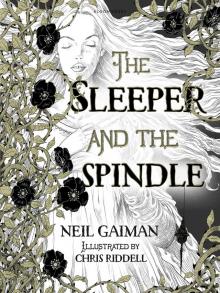 The Sleeper and the Spindle
The Sleeper and the Spindle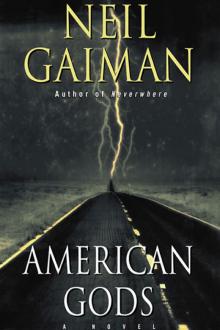 American Gods
American Gods Coraline
Coraline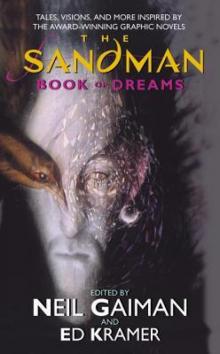 The Sandman: Book of Dreams
The Sandman: Book of Dreams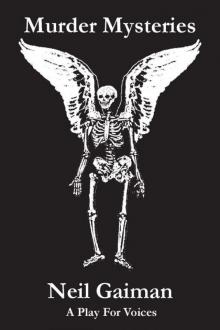 Murder Mysteries
Murder Mysteries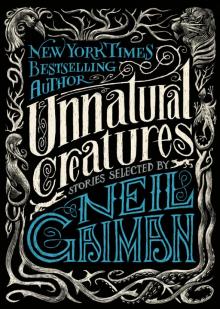 Unnatural Creatures
Unnatural Creatures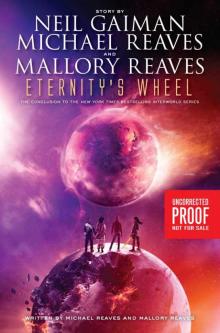 Eternity's Wheel
Eternity's Wheel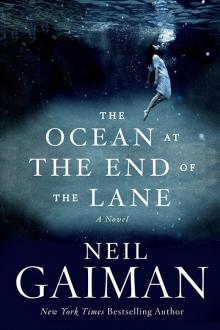 The Ocean at the End of the Lane
The Ocean at the End of the Lane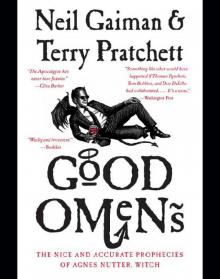 Good Omens
Good Omens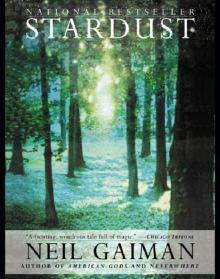 Stardust
Stardust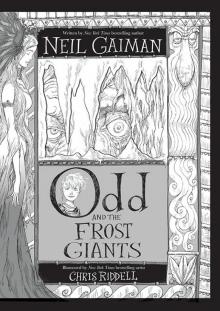 Odd and the Frost Giants
Odd and the Frost Giants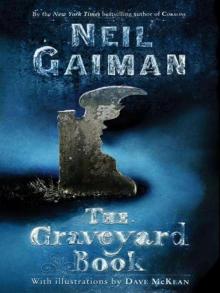 The Graveyard Book
The Graveyard Book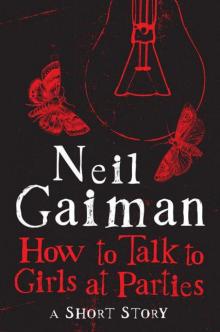 How to Talk to Girls at Parties
How to Talk to Girls at Parties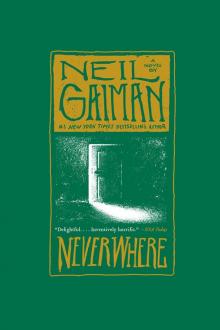 Neverwhere
Neverwhere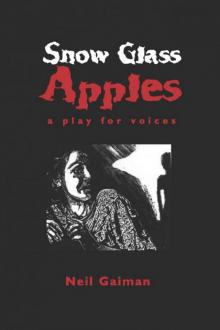 Snow, Glass, Apples
Snow, Glass, Apples Anansi Boys
Anansi Boys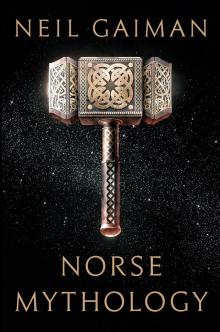 Norse Mythology
Norse Mythology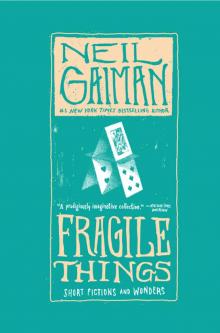 Fragile Things: Short Fictions and Wonders
Fragile Things: Short Fictions and Wonders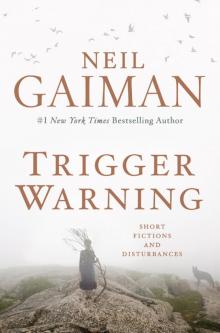 Trigger Warning: Short Fictions and Disturbances
Trigger Warning: Short Fictions and Disturbances InterWorld
InterWorld The Monarch of the Glen
The Monarch of the Glen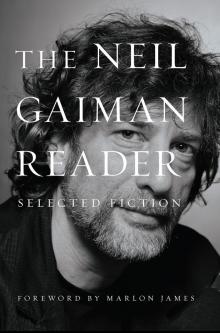 The Neil Gaiman Reader
The Neil Gaiman Reader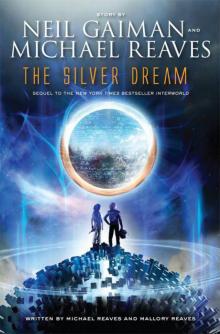 The Silver Dream
The Silver Dream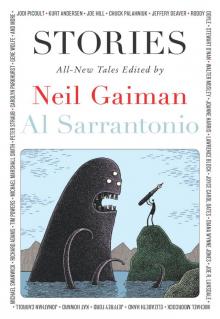 Stories
Stories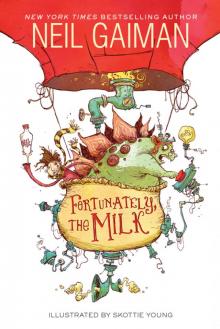 Fortunately, the Milk
Fortunately, the Milk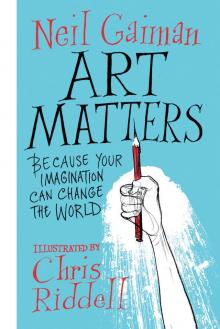 Art Matters
Art Matters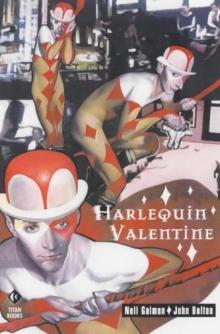 Harlequin Valentine
Harlequin Valentine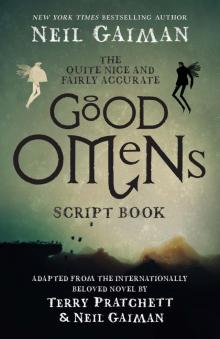 The Quite Nice and Fairly Accurate Good Omens Script Book
The Quite Nice and Fairly Accurate Good Omens Script Book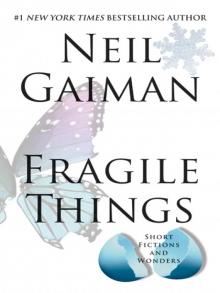 Fragile Things
Fragile Things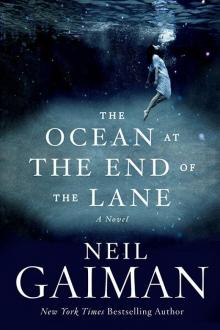 The Ocean at the End of the Lane: A Novel
The Ocean at the End of the Lane: A Novel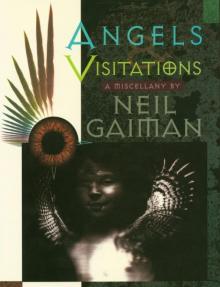 Angels and Visitations
Angels and Visitations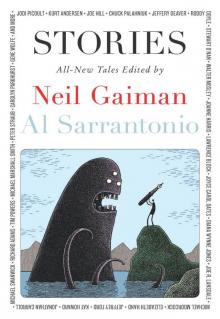 Stories: All-New Tales ngss-1
Stories: All-New Tales ngss-1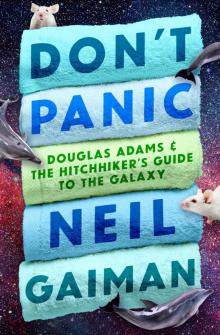 Don't Panic
Don't Panic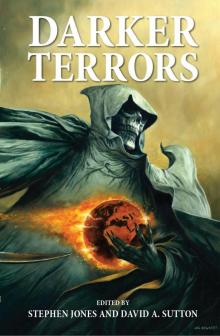 Darker Terrors
Darker Terrors Neil Gaiman Young Readers' Collection
Neil Gaiman Young Readers' Collection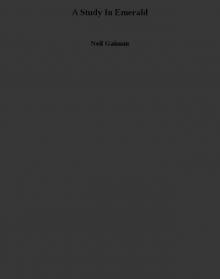 A Study In Emerald
A Study In Emerald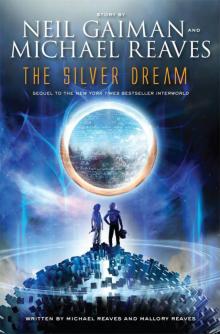 The Silver Dream: An InterWorld Novel
The Silver Dream: An InterWorld Novel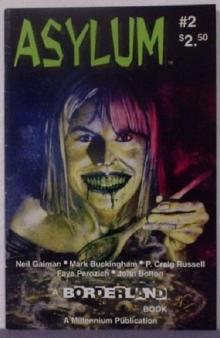 Feeders and Eaters
Feeders and Eaters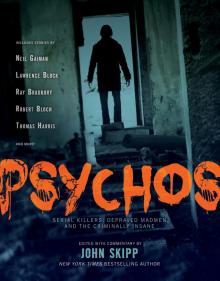 Psychos
Psychos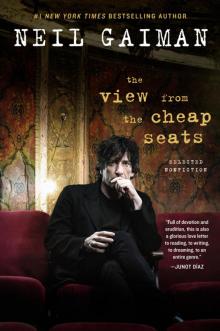 The View from the Cheap Seats
The View from the Cheap Seats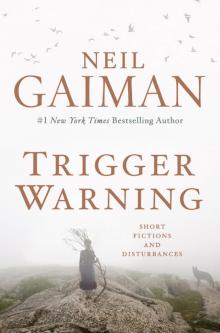 Trigger Warning
Trigger Warning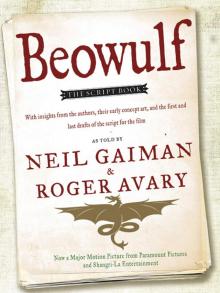 Beowulf
Beowulf Nessun Dove
Nessun Dove Doctor Who: Nothing O'Clock: Eleventh Doctor: 50th Anniversary
Doctor Who: Nothing O'Clock: Eleventh Doctor: 50th Anniversary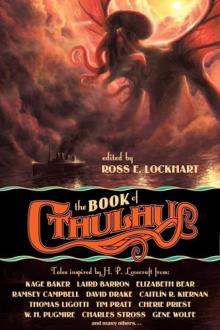 The Book of Cthulhu
The Book of Cthulhu